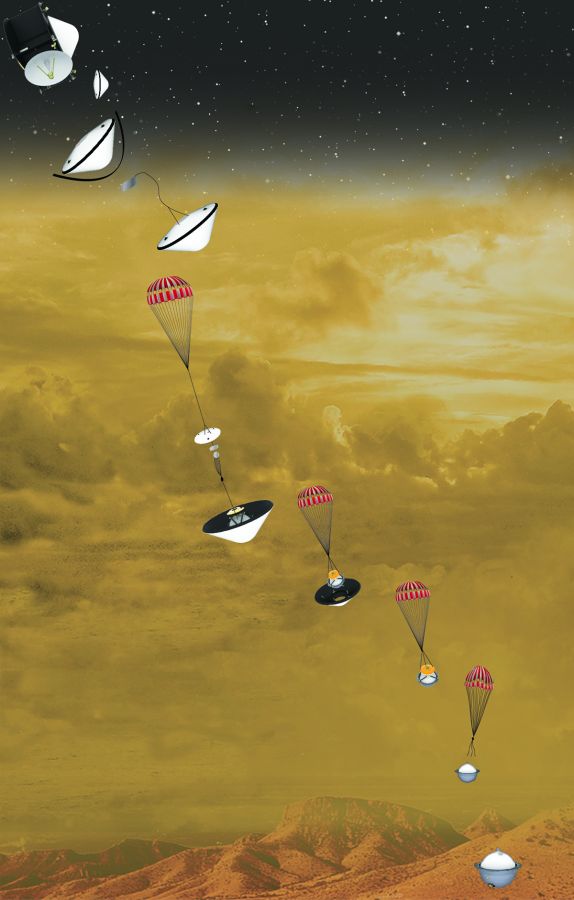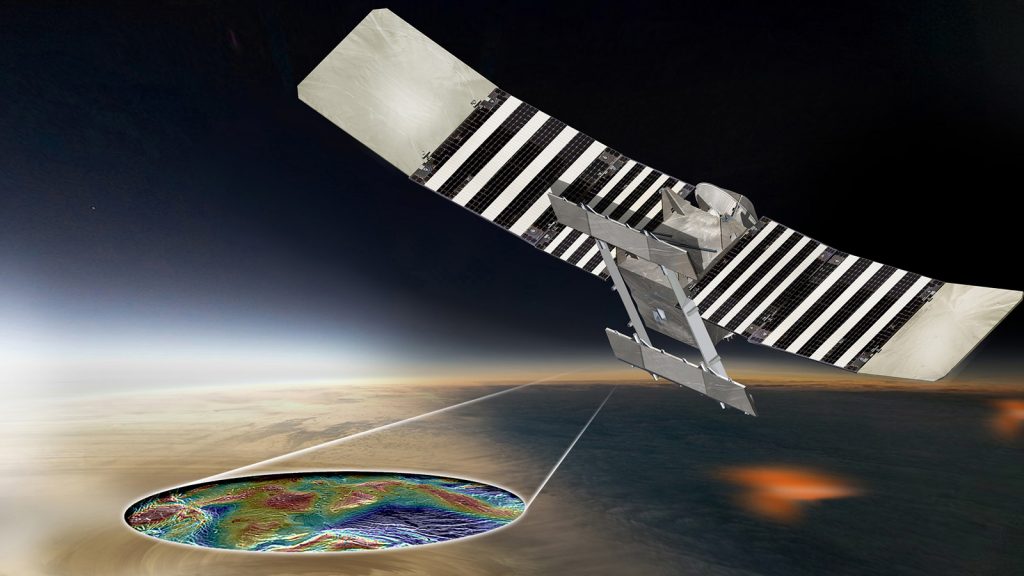We’re going to Venus! NASA has confirmed two amazing missions to go visit our evil twin planet, Venus. As a reminder Venus has temperatures of 900 F (melting lead), 93 bars of crushing pressure, corroding clouds of carbon dioxide laced with sulphuric acid! The missions destined to take this planet on are called DAVINCI+ (Deep Atmosphere Venus Investigation Noble gases, Chemistry, and Imaging) and VERITAS (Venus Emissivity, Radio Science, InSAR, Topography, and Spectroscopy). This is very exciting because of the scarcity of missions that go to Venus. The last time NASA was in 1994 with the spacecraft called Magellan, which mapped the gravitational field of Venus. However, these two missions not only will get up-close again with Venus but will actually land on Venus as well!
Both missions are aimed to launch in the 2028-2030 timeframe. It’ll be some time unfortunately for those who are eager. However, NASA isn’t the only one going back to Venus. Russia is also looking to land on Venus with their mission called Venera-D in the 2028-2030 timeframe as well.
Let’s take a closer look at DAVINCI+ and VERITAS have in store for us:

Credit: NASA/GSFC – NASA/GSFC
Source: https://science.gsfc.nasa.gov/690/photos.html
DAVINCI+ (Deep Atmosphere Venus Investigation Noble gases, Chemistry, and Imaging) will measure Venus’s atmosphere to understand how it formed and evolved over time and whether the planet ever had an ocean. DAVINCI+ will also be the mission to have a lander descent down onto the surface of Venus and take more measurements of the atmosphere. This will take even more precise measurements and help answer the question of why Venus’ atmosphere is a runaway hothouse compared to Earth. Lastly, the mission will also feature taking the first high-resolution images of Venus’ “tesserae,” which are geological features that can be thought of as “continents” as we have on Earth. Venus may have tectonic plates just like Earth – but it’s not confirmed so this will provide more data to understand how plausible that hypothesis is.

Credit: NASA/JPL-Caltech
Source: https://www.jpl.nasa.gov/news/veritas-exploring-the-deep-truths-of-venus
VERITAS (Venus Emissivity, Radio Science, InSAR, Topography, and Spectroscopy) will map Venus’ from a geological historical point of view to answer the question of how did Venus’ land form and evolve? Why is it so different from Earth? This mission will orbit Venus and do a complete 3D reconstruction of topography and even confirm whether volcanoes are still active on Venus or if plate tectonics exist and are active. VERITAS will also study and map Venus in infrared to look more closely at whether volcanoes emit or release any water vapor into the atmosphere.
The missions are exciting in a lot of ways but this quote captures the context of why it’s so significant:
“It is astounding how little we know about Venus, but the combined results of these missions will tell us about the planet from the clouds in its sky through the volcanoes on its surface all the way down to its very core,” said Tom Wagner, NASA’s Discovery Program scientist. “It will be as if we have rediscovered the planet.”
Both these missions are also part of NASA’s Discovery Program and were two proposal selected out of the four. The other two were IO Volcano Observer – which will explore Jupiter’s moon IO’s volcanoes – and TRIDENT – which will explore Neptune’s highly active icy moon called Triton. It’s a tough job for NASA to only select two out of these 4 amazing missions. It all comes down to the potential scientific value as well as the feasibility of these missions.
Sources:
